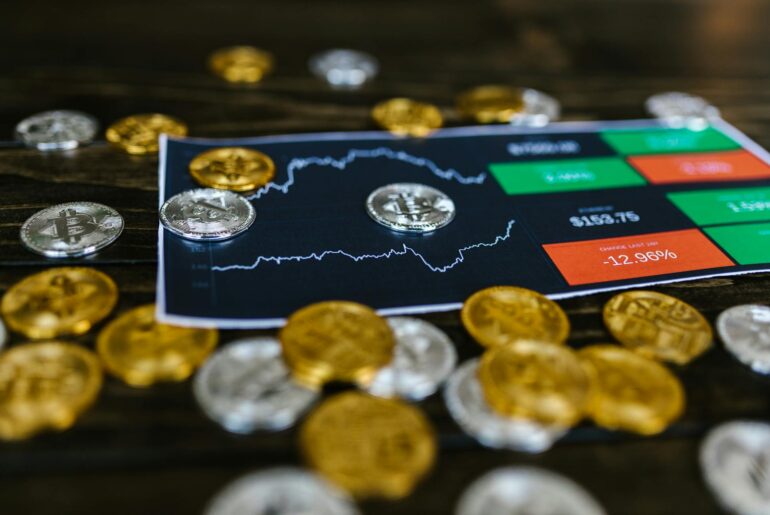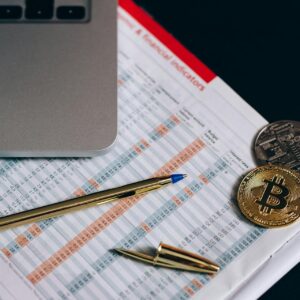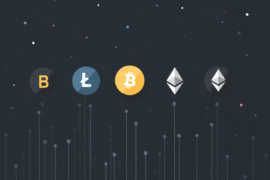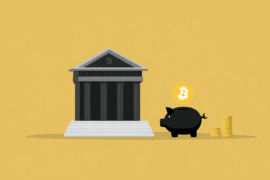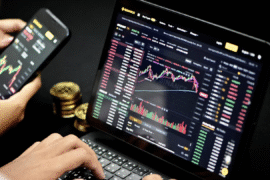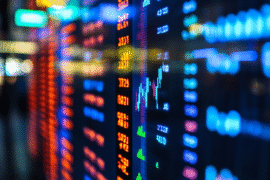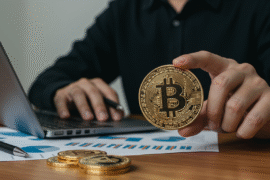This article may contain references to products or services from one or more of our advertisers or partners. We may receive compensation when you click on links to those products or services. Nonetheless, our opinions are our own.
The information presented in this article is accurate to the best of our knowledge at the time of publication. However, information is subject to change, and no guarantees are made about the continued accuracy or completeness of this content after its publication date.
The phrase high risk, high reward often resonates in financial circles, particularly when discussing volatile digital assets. Among the instruments attracting attention in the United States, crypto perpetual futures are gaining traction. These contracts offer distinctive possibilities but demand measured consideration due to their inherent complexity and potential for swift outcomes.
What Are Crypto Perpetual Futures?
Crypto perpetual futures are a type of financial contract that enables traders to speculate on price movements of digital currencies without directly owning them. Unlike traditional futures, these contracts do not expire. As long as a trader maintains the necessary margin, the position can remain open indefinitely. A feature called the funding rate helps align the price of the contract with the spot market. Depending on market conditions, traders may pay or receive funding periodically, based on whether they are long or short.
Why Perpetual Futures Are Attracting Interest
Several attributes contribute to the rising participation in perpetual futures markets. These contracts are well suited to the pace and structure of digital asset trading.
Leverage
Leverage allows traders to increase exposure without committing large amounts of capital. While this can enhance gains, it also heightens the possibility of loss.
Round-the-Clock Access
Digital asset markets never close, offering constant access to trading opportunities. This flexibility appeals to traders seeking to respond to movements without being bound to standard market hours.
High Liquidity
These contracts typically offer deep liquidity, which helps traders enter and exit positions with minimal disruption to pricing.
Risk Positioning
Perpetual futures are often used to protect other holdings or balance exposure during periods of price uncertainty.
Risks to Acknowledge Before Trading
The possibility of return is accompanied by substantial risk. Engaging with these contracts requires focus and planning.
Digital currencies are known for rapid price shifts. These movements can lead to gains, but they can also produce swift and significant losses.
Losses from Leverage
Leverage magnifies exposure. Even a small shift in price against a trader’s position can result in forced liquidation, removing the position entirely if margin levels fall too low.
Shifting Regulatory Climate
Rules around digital asset derivatives in the United States are still developing. Changes led by federal agencies may alter how these contracts are offered, traded, or accessed.
Voted "Best Overall Budgeting App" by Forbes and WSJ
Monarch Money helps you budget, track spending, set goals, and plan your financial future—all in one app.
Get 50% OFF your first year with code MONARCHVIP
Steps Toward Informed Participation
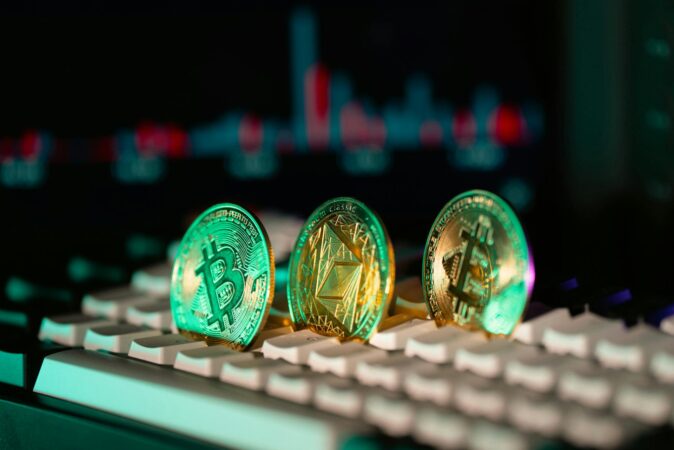
Those exploring this market should begin with preparation. A deliberate and informed entry into perpetual futures trading may help reduce exposure to preventable errors.
Learn the Fundamentals
Before opening any trades, it’s important to study how these contracts function, how price discovery occurs, and how funding and liquidation work.
Evaluate Trading Platforms
Not every platform offers the same level of safety or performance. Selection should focus on those known for reliability, transparency, and strong technical infrastructure.
Start with Modest Capital
Small initial trades allow room to become familiar with the tools and mechanics of the contract. This helps limit financial exposure during the learning process.
Create a Trading Framework
Having rules in place for entering and exiting trades, setting stop-loss levels, and choosing leverage reduces the influence of emotion. A clear plan helps ensure discipline.
Track Market Changes
The digital asset landscape evolves quickly. Monitoring price activity, market sentiment, and policy news enables more informed trading decisions.
Apply Risk Controls
Risk management should always be part of the trading routine. Using loss limits, sizing trades appropriately, and avoiding impulse decisions are central to protecting capital.
Illustrations of Gains and Losses
Real outcomes from perpetual futures trading span both profitable and adverse scenarios.
Profitable Examples
Some traders have earned substantial returns by combining proper risk limits with favorable price movements. Gains were especially notable during bullish market cycles for those who managed leverage responsibly.
Downside Events
Others have encountered steep losses by overextending on high leverage. For example, a 100x leveraged long position may be liquidated by a price move of only 1 percent against the trade, wiping out capital within seconds. These cases highlight the importance of strategy, restraint, and preparation.
Emerging Developments in the Market
More participants are entering this space, including professional and institutional traders. These groups often seek instruments that provide liquidity, transparency, and refined risk control. Advances in technology are also influencing participation. Tools that support automation, predictive analytics, and market monitoring are enabling broader access and new strategies for both individual and professional users. Policy direction from regulatory bodies remains in flux. Future updates to legal frameworks are expected to influence trading access, disclosures, and platform responsibilities.
Frequently Asked Questions
What are crypto perpetual futures?
They are derivative contracts linked to the price of digital currencies that do not expire. Traders can maintain positions indefinitely, provided margin requirements are met.
Why are they becoming more popular?
These contracts offer flexibility, allow for leveraged exposure, and align with continuous trading hours of digital asset markets.
What risks should traders be aware of?
Risks include sudden price swings, losses magnified by leverage, liquidation events, and potential shifts in regulatory policy.
How are they different from traditional futures?
Traditional futures have fixed expiration dates. Perpetual contracts remain open and use a funding mechanism to stay aligned with spot prices.
Who uses these contracts?
Retail traders, professional investors, and institutions use them for speculation, hedging, or portfolio balancing.

Reviewed and edited by Albert Fang.
See a typo or want to suggest an edit/revision to the content? Use the contact us form to provide feedback.
At FangWallet, we value editorial integrity and open collaboration in curating quality content for readers to enjoy. Much appreciated for the assist.
Did you like our article and find it insightful? We encourage sharing the article link with family and friends to benefit as well - better yet, sharing on social media. Thank you for the support! 🍉
Article Title: Crypto Perpetual Futures: High Risk, High Reward Trading
https://fangwallet.com/2025/06/25/crypto-perpetual-futures-high-risk-high-reward-trading/The FangWallet Promise
FangWallet is an editorially independent resource - founded on breaking down challenging financial concepts for anyone to understand since 2014. While we adhere to editorial integrity, note that this post may contain references to products from our partners.
The FangWallet promise is always to have your best interest in mind and be transparent and honest about the financial picture.
Become an Insider

Subscribe to get a free daily budget planner printable to help get your money on track!
Make passive money the right way. No spam.
Editorial Disclaimer: The editorial content on this page is not provided by any of the companies mentioned. The opinions expressed here are the author's alone.
The content of this website is for informational purposes only and does not represent investment advice, or an offer or solicitation to buy or sell any security, investment, or product. Investors are encouraged to do their own due diligence, and, if necessary, consult professional advising before making any investment decisions. Investing involves a high degree of risk, and financial losses may occur including the potential loss of principal.
Source Citation References:
+ Inspo
There are no additional citations or references to note for this article at this time.
